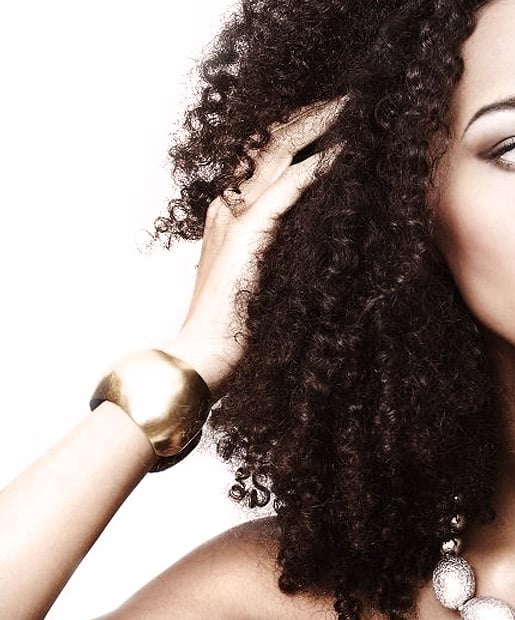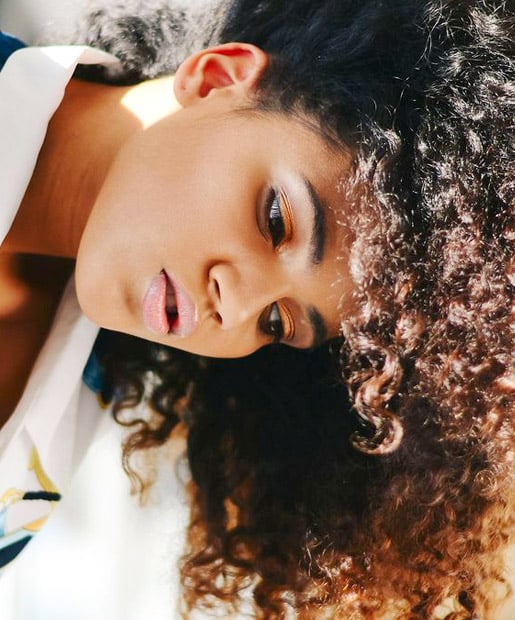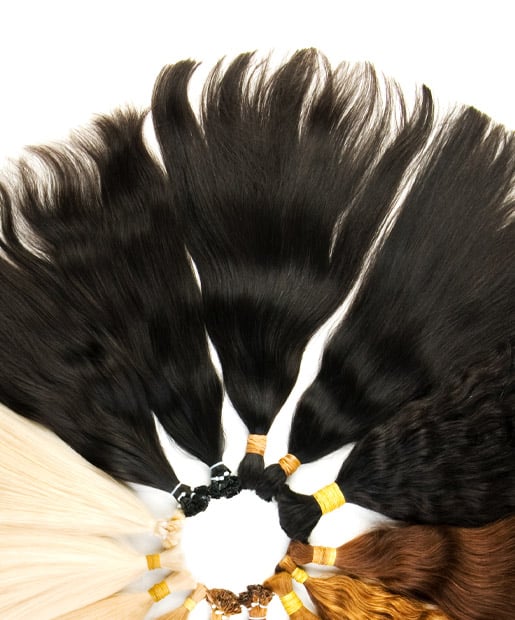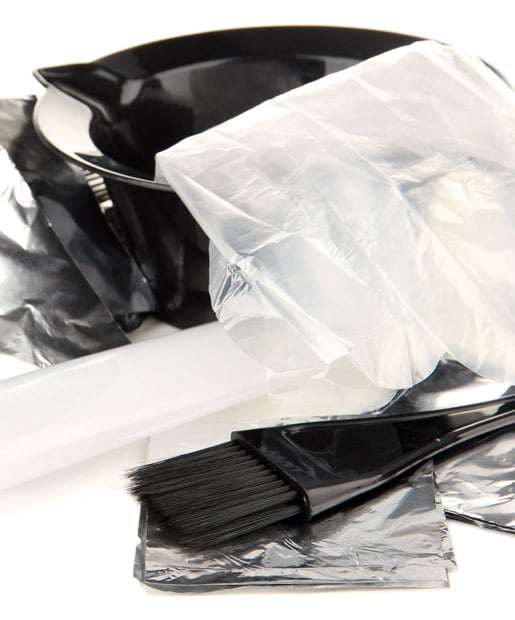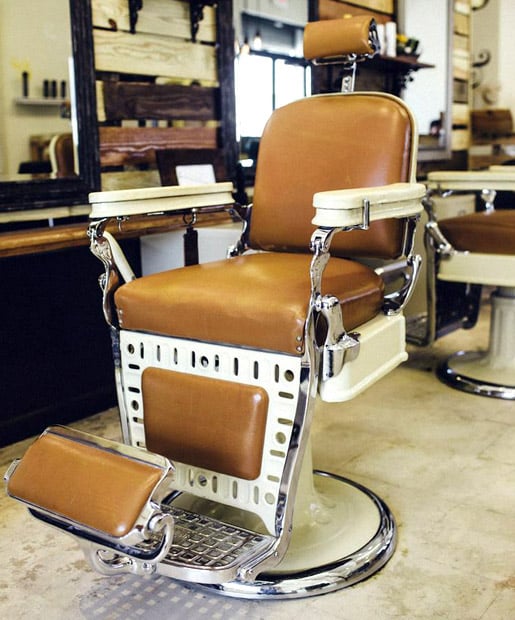Along with the texture of your hair, your starting color impacts how well a dye will take. African American women have darker hair tones that need to be bleached (hello, damage!) to remove color before going lighter. Unfortunately, coarse, kinky textures fight this process because curly hair tends to be dry, which makes it difficult to strip color out, says celeb colorist Aura Friedman. Once the color is lifted, problem #2 pops up: Dark hair tends to turn orange-y or yellow when bleached.
A looser curl pattern can also affect how your hair takes color post-bleaching. If you have smoother, wavier hair, you have a smoother cuticle, which makes your hair more resistant to color -- unless your hair is chemically processed (more on that later). But it's not all bad news ....
A looser curl pattern can also affect how your hair takes color post-bleaching. If you have smoother, wavier hair, you have a smoother cuticle, which makes your hair more resistant to color -- unless your hair is chemically processed (more on that later). But it's not all bad news ....
Here's the good news: you get more bang for your hair-coloring buck with kinky hair. The hair is more porous, which means it absorbs color better (and faster), and all of those curls at the root make it harder to see the new growth (think fewer touch-ups in between). Dellinger says you also buy more time using hair care products and maintaining habits tailored to your curly texture, like washing your hair less often and using moisturizing, sulfate-free shampoo, conditioner and styling products.
The not-so-good news? If you're looking for a drastic Beyonce or Rihanna level of color change, you really need to hit up a salon and let a professional handle the coloring because your hair is so much more fragile than your non-curly counterparts (particularly if your hair is already chemically treated), says Dellinger. But if you want something less drastic -- just a little extra oomph -- there are temporary rinses and semi permanent dyes you can apply at home (more on that soon).
The not-so-good news? If you're looking for a drastic Beyonce or Rihanna level of color change, you really need to hit up a salon and let a professional handle the coloring because your hair is so much more fragile than your non-curly counterparts (particularly if your hair is already chemically treated), says Dellinger. But if you want something less drastic -- just a little extra oomph -- there are temporary rinses and semi permanent dyes you can apply at home (more on that soon).
Regardless of which coloring route you take (salon vs. at-home), you absolutely must prep your fragile hair for the transformation. Dellinger recommends these steps in the weeks and days leading up to your appointment:
Two months before appointment:
• Remove braids, weaves and/or extensions.
• Do not blow dry or flat iron the hair.
One month before appointment:
• Deep condition your hair with heat or steam and a protein rich conditioner, like CURLS Curl Ecstasy Hair Tea Conditioner, $20, once a week for two weeks. Weeks three and four, use a moisturizing conditioner like CURLS Coconut Sublime Moisturizing Conditioner, $16.
• Moisturize the hair daily with a humectant rich leave-in conditioner like CURLS Cashmere Curls Leave-In Moisturizer, $20, and seal with a natural oil (coconut oil is always a good pick).
One week before appointment:
• Trim the hair before coloring.
Day before appointment:
• Deep condition to even out porosity and create a healthy base for hair color.
Two months before appointment:
• Remove braids, weaves and/or extensions.
• Do not blow dry or flat iron the hair.
One month before appointment:
• Deep condition your hair with heat or steam and a protein rich conditioner, like CURLS Curl Ecstasy Hair Tea Conditioner, $20, once a week for two weeks. Weeks three and four, use a moisturizing conditioner like CURLS Coconut Sublime Moisturizing Conditioner, $16.
• Moisturize the hair daily with a humectant rich leave-in conditioner like CURLS Cashmere Curls Leave-In Moisturizer, $20, and seal with a natural oil (coconut oil is always a good pick).
One week before appointment:
• Trim the hair before coloring.
Day before appointment:
• Deep condition to even out porosity and create a healthy base for hair color.
If your hair isn't chemically straightened and you're just looking for a nice wash of color, you can dabble in dyeing at home. Willhite and Dellinger both suggest looking for semi-permanent dyes that are ammonia and PPD-free, like Lush Henna Hair Dye, $29.95, a natural option that also deep conditions. "Relaxers dramatically increase porosity, so if you've relaxed your hair, it's best to use ammonia free products like demi-permanent color (which lasts a little longer than semi-permanent) and wait two weeks between chemical treatments and color," says Estelle Baumhauer, color director of at-home color specialist eSalon. You can also try a gloss to boost color or a temporary treatment like eSalon Tinted Love Color Enhancing Treatment, $12.45.
For the best results (and to minimize the chances of royally screwing up), experts suggest staying within one level of your natural hair color and using a gel or liquid formula, which do a better job coating curly and thick hair. The most common mistakes experts see with at-home application? Baumhauer says women often botch their dye job by overlapping new color onto previous colored ends (a big no-no) or pick the wrong color altogether. Others apply color to hair without treating dryness first, causing the color to absorb unevenly. If you're not confident in your at-home know how, it's time to book an appointment.
For the best results (and to minimize the chances of royally screwing up), experts suggest staying within one level of your natural hair color and using a gel or liquid formula, which do a better job coating curly and thick hair. The most common mistakes experts see with at-home application? Baumhauer says women often botch their dye job by overlapping new color onto previous colored ends (a big no-no) or pick the wrong color altogether. Others apply color to hair without treating dryness first, causing the color to absorb unevenly. If you're not confident in your at-home know how, it's time to book an appointment.
Even if you're putting your hair in the hands of a pro, Baumhauer notes that you need to be upfront about your hair history for the best results. That means dishing on everything: if you've chemically treated your hair before, with a relaxer, a keratin treatment, another color, your current gray hair percentage, anything. "Just because you can't see the treatment doesn't mean it's not there -- it will affect your color unless the previous treatment has been cut out," she adds. Here are other things Willhite says to be aware of so you don't freak out during your actual appointment:
• If you're getting highlights: Your colorist will be more cautious when deciding on the strength of product and take much more time with placement -- highlights make more of an impact on curly hair in terms of movement and enhance structure.
• If you're getting overall color: Your colorist will want to use slightly lighter or warmer color on your ends to add more dimension.
• If you're getting ombré: Your colorist can use bolder pieces and chunks of color than they usually would on straight hair because finer strips of color would get lost in the mass of the curl.
• If you're getting highlights: Your colorist will be more cautious when deciding on the strength of product and take much more time with placement -- highlights make more of an impact on curly hair in terms of movement and enhance structure.
• If you're getting overall color: Your colorist will want to use slightly lighter or warmer color on your ends to add more dimension.
• If you're getting ombré: Your colorist can use bolder pieces and chunks of color than they usually would on straight hair because finer strips of color would get lost in the mass of the curl.



